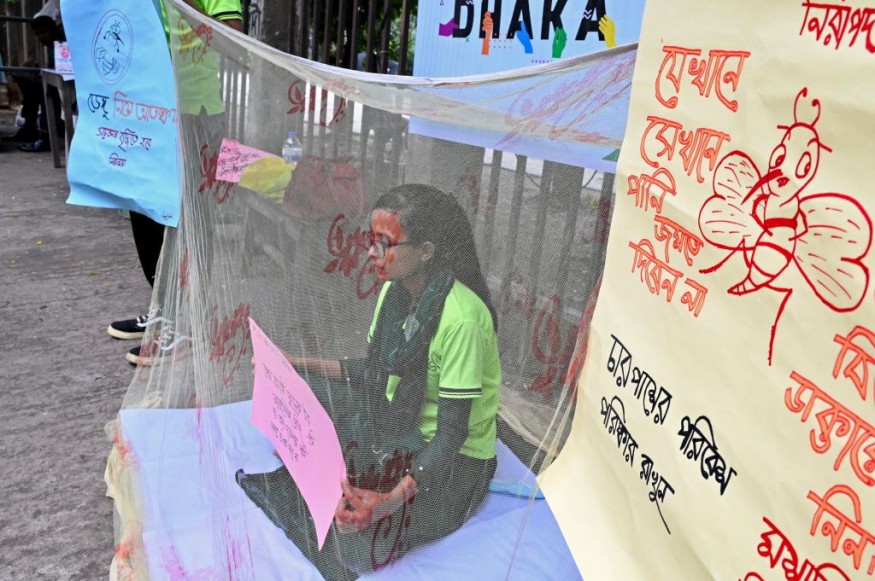
The dengue outbreak in Bangladesh claimed the lives of nearly 1,000 individuals, with authorities saying that this was the most severe outbreak that the country had experienced.
Authorities attributed this to the extraordinarily wet monsoons, which have made it easier for dengue-carrying mosquitoes to breed in dirty and stagnant water.
Situation in Bangladesh
The World Health Organization said that last month, a total of 71,976 dengue cases and 342 deaths have been reported in Bangladesh, which is considered as the highest number of monthly cases and deaths when compared with the available historical data from 2019 to 2023.
The WHO said that between September 1 and 17, a total of 43, 876 new cases and 229 new deaths have been recorded. A total of 167, 684 dengue cases including 822 deaths have been cumulatively reported between January 1and September 17, 2023 with a case fatality rate (CFR) of 0.49%.
Officials in the country have been struggling to contain the spread of the disease, with most of the hospitals critically overwhelmed already. Some hospitals are also running short of intravenous fluids, which is crucial to the treatment as most dengue patients usually suffer from dehydration.
To contain the outbreak, the Directorate General of Health (DGHS) as well as the Ministry of Health provided orientation sessions in Dhaka, Chattogram and Barisal for 300 doctors regarding the updated case management of dengue.
Further, an assessment of dengue case management was also conducted at major public hospitals in Dhaka by the United States Centers for Disease Control (US CDC), WHO and the Ministry of Health of the country.
Additional dengue test kits have also been procured by the United States Agency for International Development (USAID) through UNICEF and RT-PCR assay kits have been provided by US CDC for dengue serotyping.
Meanwhile, a dengue laboratory expert from US CDC has also provided technical support on PCR testing, serotyping, and sequencing as part of the efforts to combat the spread of the disease.
The WHO has noted that a combination of factors, including climate change, had contributed to the increase of dengue cases around the world, with millions of people infected.
Officials also said that the warming planet had worsened the weather patterns in South Asia, resulting in monsoon seasons that are wetter and hotter.
These weather conditions create a favorable breeding environment for the Aedes mosquitoes that carry the virus.
According to Dr. Tedros Adhanom Ghebreyesus, WHO director general, the outbreak has been putting huge pressure on the health system.
"WHO is supporting the authorities to strengthen surveillance, laboratory capacity, clinical management, vector control, risk communication and community engagement. We have trained doctors and deployed experts on the ground. We have also provided supplies to test for dengue and to support care for patients," he said.
Dengue
Dengue is a viral infection that spreads from mosquitoes to people. It is more common in tropical and subtropical climates.
Most people who get dengue will not have symptoms. But for those that do, the most common symptoms are high fever, headache, body aches, nausea and rash.
Most infected people will also get better in 1-2 weeks while some people develop severe dengue and need care in a hospital.
In severe cases, dengue can be fatal.
One could lower the risk of dengue by avoiding mosquito bites especially during the day.
Related Video:
© 2025 NatureWorldNews.com All rights reserved. Do not reproduce without permission.





